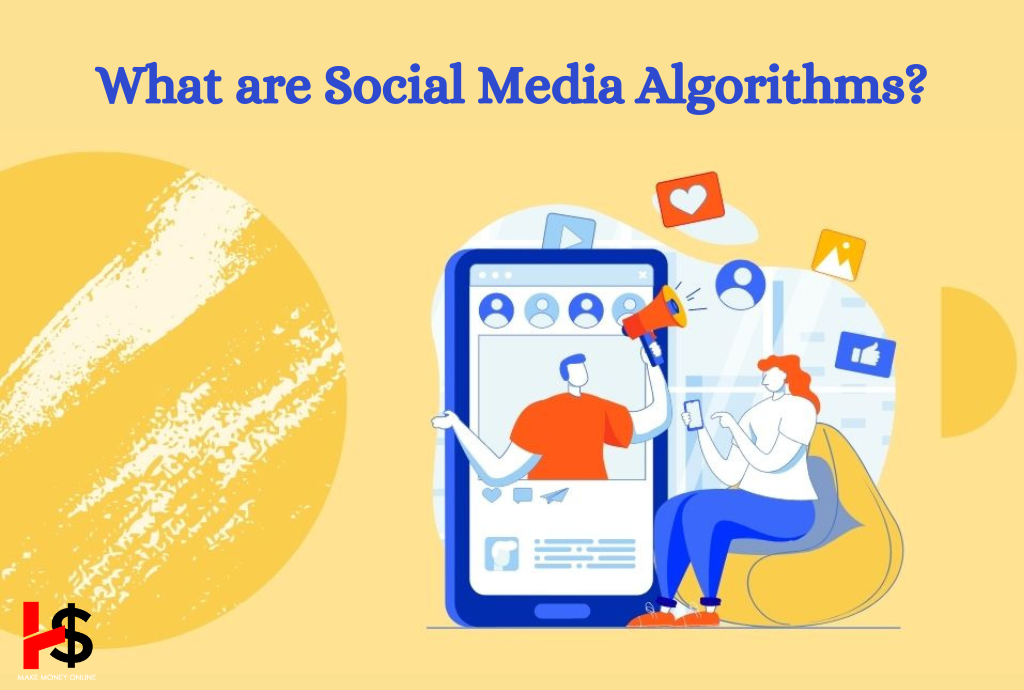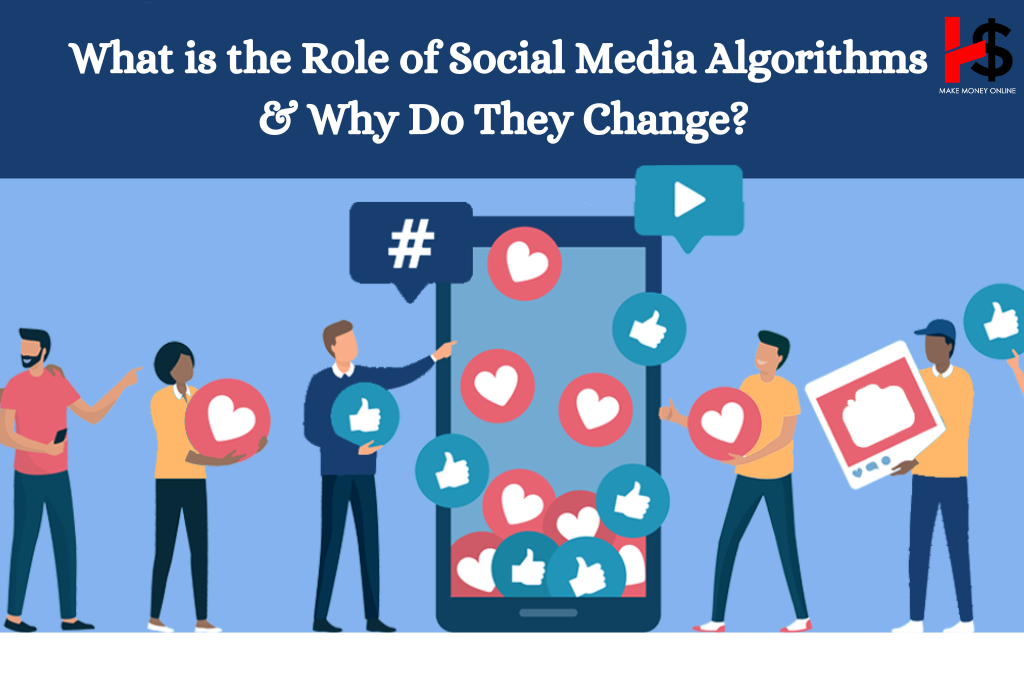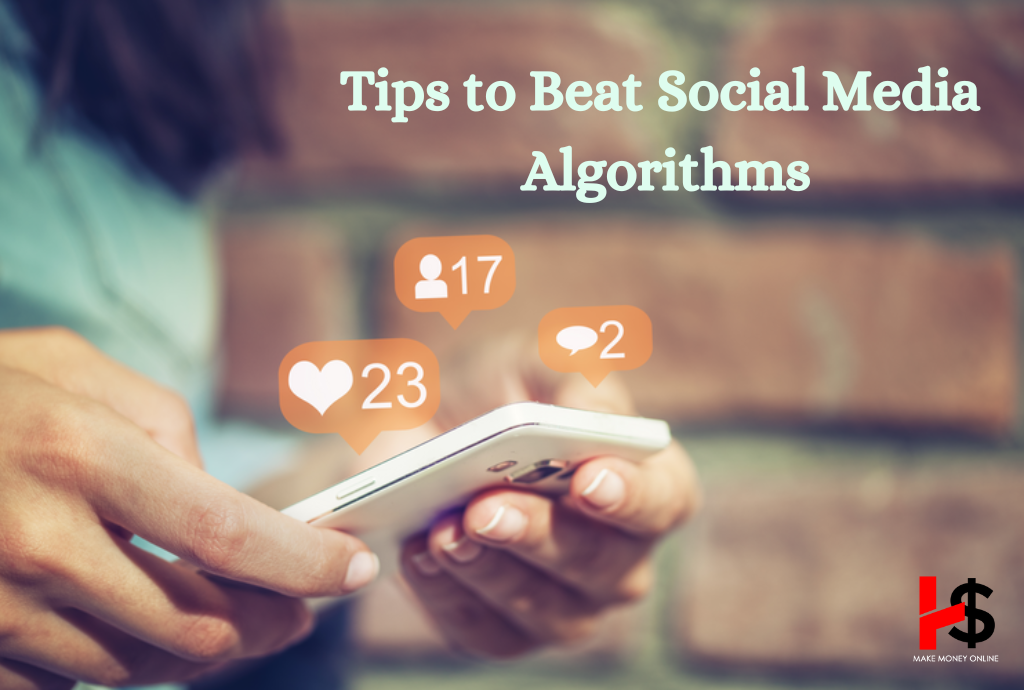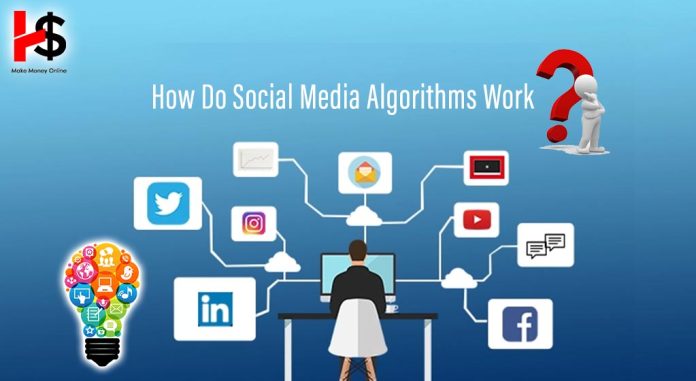The majority of people globally now use social media on a daily basis, with it having been ingrained in our cultural fabric. Brands looking to reach new consumers through advertising are showing interest in both existing and newer platforms such as Instagram and TikTok. Because of the enormous number of users on these networks, order and relevancy must be established, a task that algorithms effectively perform.
Social media algorithms are constantly evolving, posing a challenge for marketers to stay updated. While it’s impossible to understand every detail of each change. The current algorithm influences your position in social media ads and where your content appears in a user’s feed. This guide will help you understand what an algorithm is, explore various social media algorithms and provide tips on optimizing your content distribution and engagement across platforms such as Facebook, Instagram, TikTok, Twitter, LinkedIn and Pinterest.
Table of Contents
What are Social Media Algorithms?

An algorithm is a collection of mathematical rules that specify the behavior of a set of data. Algorithms are essential in social media because they arrange content and decide which searches and adverts appear first. On Facebook, for example, pages and information are arranged in a particular order by virtue of an algorithm. (You can look at efficient engagement tricks for the Facebook algorithm if you want to get more views.)
150 million new users will join social media by April 2023, accounting for an estimated 60% of the global population. Monitoring and managing that is an enormous task. This is the reason social media algorithms are so important for judging social media accounts and content placement and quality. Although there isn’t a comprehensive guide on the numerous algorithms and how to maintain them, we have enough knowledge to navigate the social media algorithms successfully. One notable trend in recent years is a shift towards a more user-friendly approach, akin to Google’s ranking system. This incentivizes users of social media to interact with customers and produce pertinent, high-quality material.
What is the Role of Social Media Algorithms & Why Do They Change?

Social media utilizes algorithms to organize content within a users’ feed. With the vast amount of content available, these algorithms serve as a tool for social networks to prioritize material they believe a user will find appealing, considering various factors. It is advantageous for marketers, ensuring their content reaches the intended audience. However, it is essential to note that social media algorithms are far from flaws.
Filtering away irrelevant or low-quality stuff is the goal of an algorithm. If your content doesn’t meet the requirements, it could be buried or removed from feeds. Furthermore, in order to guarantee that consumers and bots alike see your material, it’s critical that you familiarize yourself with the fundamentals of the web as Google adds a new ranking factor called page experience.
According to YouTube Analysis, even if users may not want some videos, those selected by the algorithm can receive a large number of views. Also, the survey found that 60% of YouTube viewers saw videos containing inappropriate content and 60% watched videos featuring individuals engaging in dangerous or unsettling behavior. Due to their imperfections, social media algorithms frequently implement minor adjustments to satisfy consumers. Making ensuring your videos are engaging and high-quality is the first step. Then, monitor any alterations to your content and social media strategy and act accordingly.
Types of Social Media Algorithms

Social media algorithms differ across platforms, so it’s helpful to break them down by brand. Major platforms like Facebook, Pinterest, LinkedIn, Twitter, and Instagram each employ unique content and user ranking systems. Here’s an overview of how they currently prioritize content and users.
Facebook Algorithm
In determining your content feed, the Facebook algorithm considers crucial factors such as the content creator’s identity, the type of content and the post’s existing interactions. The algorithm amplifies a post’s reach based on the number of interactions. So, if your post performs well within a smaller audience, the algorithm will expand its distribution to users it believes share similar interests. Here are some vital ranking signals to consider while devising your marketing strategies:
Quality of Content: Major ranking indications also include content correctness, informativity, and authenticity. Independent fact-checkers at Meta protect the quality of material by pushing posts down in feeds if they are found to be partially or completely false.
Level of Engagement: High numbers of likes, shares, and views indicate increased involvement, which is why the Facebook algorithm promotes such content.
Facebook Friends and Followers: Facebook mostly favors content from the pages you follow and your friends.
Content Type: A certain content format will appear more frequently in your feed the more your view it. For instance, if you interact with them more, the system will display more reels on your feed.
There is a decrease in organic reach on social networks, especially Facebook. An organic post’s average reach has decreased by more than 5%, and its engagement rate is as low as 0.25%. When an account has more over 100,000 followers, this percentage drops even further to 0.08%. Even though purchased Facebook material is evaluated differently, engagement, consumer reaction, and topic relevancy are still important considerations.
You can also read: 5 Facebook Advertising Mistakes To Avoid
Instagram Algorithm
Instagram, which was formerly limited to photos, has developed into a fantastic tool for video marketing. There are other categories on Instagram, such as the Explore page, Reels, Stories, and main Feed. Content from people you know appears in both the main Feed and Stories, along with some advertisements and content recommendations. The Instagram algorithm may take into account indications like the time a post is shared, whether a user is accessing the platform through a mobile device or a computer, and the frequency with which they interact with other users’ videos when curating their Feed and Stories. The app gets more accurate with its recommendations as the user spends more time using it.
Instagram Reels
Instagram’s reels feature is dedicated to providing entertainment for its users. Similar to the Explore page, Reels showcase content from accounts that you don’t follow. The algorithm selects reels it believes you might enjoy and arranges them based on perceived interest. However, the primary focus of reels is on providing entertainment. Instagram actively gathers user feedback through surveys to assess either a particular reel is deemed funny or entertaining. They use this information to enhance its predictive capabilities for user preferences. Furthermore, the algorithm gives preference to smaller creators in the content selection process.
LinkedIn Algorithm
LinkedIn, a social media platform that specializes in networking over gaining followers, is acknowledged as a leader in business-to-business marketing. At the moment, fortune 500 companies use it the most frequently. Strong and relevant content is essential for LinkedIn success since the platform has established an algorithm based on connection and engagement. Prioritizing relevant content and encouraging interaction are the goals of the algorithm. Since 2018, the amount of viral content on LinkedIn has increased by 50% annually. You can expand your networking chain later if you have content that is worth reading, even if you don’t currently have many links. Here are the important LinkedIn ranking signals:
Early Engagement: It is one of the most significant ranking factors that decides if a post is promoted higher in the feeds.
Quality of Post: The main ranking signal classifies information as either high quality, poor quality, or spammy based on its quality. Nonetheless, LinkedIn has standards for determining what constitutes high-quality content. Think about the following:
- Include strong keywords
- Use hashtags
- Encourage responses
- Easy to read
LinkedIn Connections: The second ranking factor that guarantees your post will show up in the feeds of your close LinkedIn contacts is your connections.
Twitter Algorithm
Twitter prioritized the time and day over content when it began in 2006, with posts being ranked according to their timeframe. On the other hand, the recently adopted Twitter algorithm has changed significantly. Numerous more ranking elements are now taken into account, including demographic relevance and subject competence. The main signals of Twitter algorithm are:
- Virality
- Recency
- Relevance
- Personal Interests
- Geographical location
YouTube Algorithm
YouTube is a huge hub for videos, either you’re into learning or just enjoying music videos. The way it suggests videos to you is unique, and it has evolved a lot over time. Now, it even considers big live events like sports when recommending what to watch. Most of the videos people see on YouTube are influenced by this suggesting thing. They did this on purpose so that what you like or don’t like doesn’t affect the suggestions too much. They make sure that you see different things and not just the same stuff all the time.
Pinterest Algorithm
Pinterest is a platform for social media even though it has a significantly different layout and following method. The Pinterest algorithm is determined by four primary factors:
- Quality of Pin
- Quality of Domain
- Relevance of the Topic
Pinterest used a guided search method that utilizes data from past content interactions to promote the discovery of new connections. For example, if you’ve previously explored wedding hairstyles, Pinterest is more likely to present you with additional hairstyle options the next time you log in. the advantage of this interest-themed algorithm is its consistency in showing users content aligned with their preferences. Furthermore, the ‘controllable distribution’ feature introduces in 2020 ensures that users see a limited amount of new content based on their past interactions. This method increases the possibility that users consuming and enjoying the presented content.
Tips to Beat Social Media Algorithms

Know the Best Time to Post
Both the content and the timing of your posts are important. For numerous social media algorithms that rank posts, timing is a crucial ranking factor. This means that, if uploaded at the incorrect time, a high-quality post intended for a certain target may perform poorly. For optimal visibility and interaction, post during your audience’s online hours, albeit the optimal times will depend on your industry, platform, and audience. Between 9 a.m. and noon, we discovered via our research, is the ideal time to post on social media.
Use Relevant Captions, Keywords and Hashtags
The social media algorithms may find it difficult to connect with engaged viewers if you post fashion ideas without mentioning it in your caption. As much information as possible about your video should be included when sharing it, but not so much that the system perceives it as spam. Add pertinent captions, keywords, and hashtags to your post to make sure it has all the information it needs. See which hashtags are popular and add any pertinent hashtags related to those trends by doing some preliminary research.
Natively Share Videos
Each platform has its set of video marketing requirements, such as file size. If you’re creating a video for Pinterest, it’s essential to ensure that your video fulfil the specific requirements. You have to familiarize yourself with the strengths of each platform and the demographics of its user based that enables you to create content that is not only inviting but also right for each specific platform.
Use Humor and Other Emotions
Express your feelings through your content, especially when using video. Building links between your business and positive emotions like joy and recognition is made possible by including humor and emotion into your marketing strategy. On social media, hilarious videos are shared more frequently than other types of material by a sizable audience looking for enjoyment. The algorithm will use the momentum your article builds to make it even more visible to as many people as possible.
Optimize Your Content
It’s difficult to predict what will bring the most response from your audience, therefore you must optimize your content. Regardless of the type of content you begin with, you must know what your audience actually desires. Do people respond more favorably to live-action or animated videos? If yes, you should produce more animated material for your audience to view.
Tag Others in Your Post
Content that receives a lot of comments, shares, and likes is preferred by social media algorithms. Better engagement increases the likelihood of going viral. Ask questions that grab your audience’s interest in order to promote comments. To get people talking, ask them their opinions on hot subjects or make a daring inquiry that will get them thinking. A screenshot shows the official Instagram account asking its followers a question on Twitter. While a call to action that asks a question is a way to start a conversation, it’s important to execute it correctly. To promote positive discussion, stay away of controversial or offensive questions.

